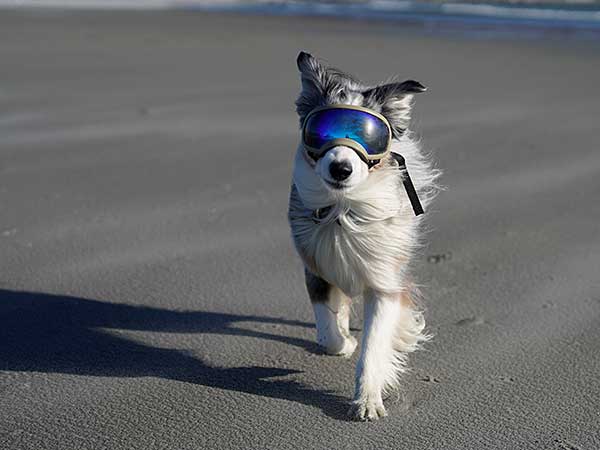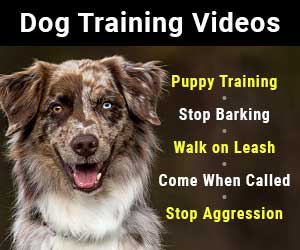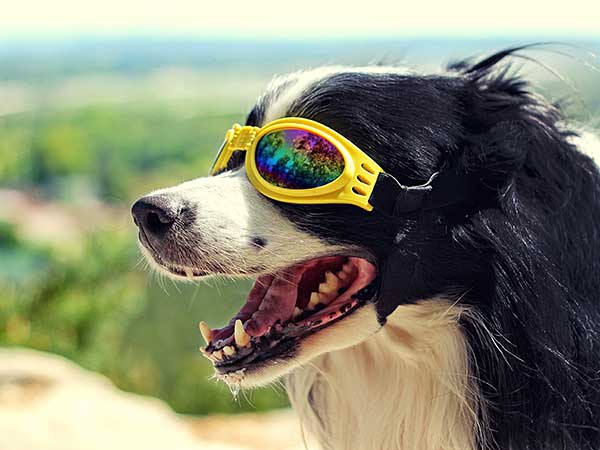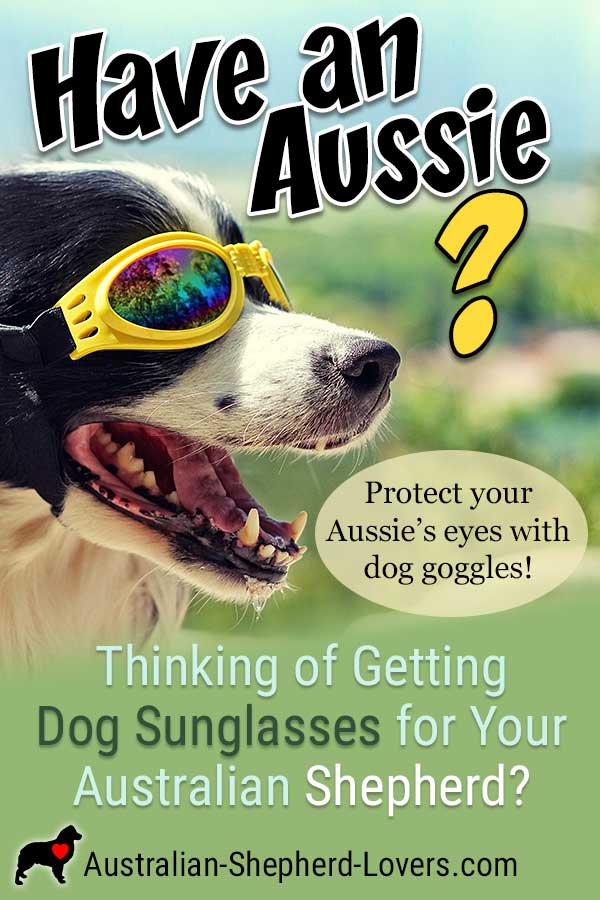
Thinking of Getting Dog Sunglasses For Your Australian Shepherd?
Dog sunglasses or dog goggles may seem like nothing more than comic relief but in some instances, they can serve a very serious purpose. As with humans, sunglasses help to provide protection for a dog's eyes from irritants and sun damage. They can add a layer of safety for dogs with eye injuries or help to keep eye diseases from worsening. Best of all, they are generally very affordable so you can help your dog without breaking your budget.
So why exactly would a dog require eye protection like dog goggles? There are two main reasons for the use of sunglasses: to protect the eyes from injury or from the sun. Just as you grab a pair of sunglasses to shield your own eyes from the sun's harmful UV rays, protective eyewear can help to guard one of the most sensitive parts of your dog's body. That being said, the need for eye protection can vary depending on breed.
Breeds with more prominent eyeballs, like Pugs and Boston Terriers, may be more susceptible to eye injuries. Working and athletic breeds like the Australian Shepherd can also benefit from protection as they are outdoors on a regular basis and may be exposed to irritants and foreign objects that could impact the eyes. Dog sunglasses can also be particularly helpful for blind or visually impaired dogs to prevent damage and injury.
What dog doesn't love sticking their head out the window to enjoy the breeze during car rides? Unfortunately, this can put them at risk of an eye injury from debris in the air kicked up by other vehicles or flying insects. Many plants also scatter their seeds in the wind like the fluffy fibrous ones and the winged seeds that you may have seen whirling about. Dog goggles are an ounce of prevention worth considering.
Dog Sunglasses Can Do More That Just Protect From Injury
Aside from injury, the other thing that impacts the health of your dog's eyes is sun damage. While sun exposure can lead to the development of cataracts in humans, the danger for dogs is slightly different, as, sadly, they don't typically live long enough to develop cataracts. Instead, the greatest danger for dogs is that sun exposure may worsen a condition known as pannus, or keratitis, or may cause the development of ocular cancer.
Another important use for dog sunglasses is to help protect the eyes in dogs that are recovering from eye surgery. Dogs with eye irritation or whose eyes have been surgically repaired can cause themselves considerable harm by pawing, rubbing or scratching at their faces. Most vets suggest the use of an Elizabethan collar during recovery to prevent this, but sunglasses can provide protection as well and may actually be tolerated better than E-collars.
Keep in mind that you would need your dog to already be comfortable with wearing dog goggles before the eye surgery. If you try using them for the first time after their surgery they are likely to paw at the goggles and try to remove them causing the exact harm you are trying to avoid. We'll take a closer look at how to train your dog to get used to them later.
Sunglasses used for dogs differ from human glasses in that they are made in a goggle style from flexible materials to fit comfortably on the face and include a head strap to keep them in place. They don't require a prescription, so you can easily get them through online retailers like Amazon, and they are relatively inexpensive. The important thing is to ensure that they fit comfortably so that your dog can go about his normal routine with no trouble.
The eyes are extremely sensitive so it is crucial that you pay careful attention to your dog's health and have his eyes checked regularly. Signs of eye problems can include squinting, redness, tearing, pawing or rubbing at the eyes, and lethargy. If your dog exhibits any of these signs you should take him to the vet immediately.
Remember, you are the first line of defense when it comes to protecting your dog's eyes so always be vigilant about his care, take him to the vet for regular eye exams and consider purchasing an effective pair of dog sunglasses to keep his eyes safe and sound for years to come.

Photo used with permisson of Rex Specs
Fit, Style, And Quality Of Dog Sunglasses
UV/Wind/Dust/Fog/Snow Dog Eye Protection, Wide Snout Rest, Soft Frame
Dog sunglasses will have soft padding around the inside of the frames to make them comfortable. They will also have straps to secure the goggles. Before ordering, be sure to follow the manufacturers instructions for getting the right measurement to ensure you get the best fit for your dog.
You will see two main styles of dog goggles. The type with two separate lenses and the visor type that extends all the way across which allows for a full range of view.
Regardless of the style you choose there is another important factor you will want to take into consideration. What is the quality of the UV protection? Some products say they have UV protection, but at what rating and for both UVA and UVB rays?
UV Protection and Dog Goggles
You might ask how a clear lens can provide protection from UV light. After all, aren't darker lenses better at blocking UV? That's actually a myth and the shade of the lens has nothing to do with UV protection.
You could have clear lenses with excellent UV protection and dark shaded lenses with poor UV protection. In fact, low quality dark lenses could be worse than no lenses at all as the shading would cause the pupils to dilate as a result of the lower light level.
This is not only true for dog sunglasses but your shades too. It is recommended that you take your sunglasses to an optometrist so they can check the UV protection you really have. You may be surprised. Most sunglasses will be okay, but if you ever got some el cheapos you may be doing yourself more harm than good!
Another thing to look for is the availability of replacement lenses. Sooner or later they are going to get some scratches. Scratches on a lens won't bother your dog as much as it would you on your glasses as they have relatively poor close-up vision and are likely to see past any minor scratches, but it's nice to have the option. Before making a purchase, confirm that replacement lenses are available.

Photo used with permisson of Rex Specs
Training Your Aussie To Wear Dog Goggles
Wearing goggles is not something that comes naturally to dogs, so you'll want to ease them into it. You can't just put them on your dog out of the blue and expect them to stay on very long. But with a little patience and a lot of praise and rewards you'll have them proudly sporting their new dog sunglasses in no time.
Before you even attempt to put them on your dog let your dog check them out. Clip the buckles together to expose your dog to the sound. Let your dog sniff them and get used them. Don't rush this step. I know you want to see how cool your dog looks in 'em, but you don't want them to feel pressured.
Protect your dog's eyes from sun, wind, and dust. Anti-fog dog goggles with adjustable strap.
Once they are comfortable with the goggles being around you can move to the next stage. If you have the kind that allows you to remove the lenses take out the lenses first. Slowly begin introducing your dog to the idea of having the sunglasses on their face without strapping them on.
These sessions should be very short and very positive. Praise, praise praise. Reward, reward, reward.
Then try putting the goggles on, without the lenses if possible, for a short duration. A good idea is to keep them on a leash until they are comfortable so they don't run off and try to remove them.
Once they tolerate the dog sunglasses and understand that they don't present an impediment you can try adding the lens back in (if you have the kind with removable lenses). Some may come with a clear lens and a tinted one. In this case, start with the clear lens until your dog is completely comfortable. Then you can try out the cool tinted shades for their Instagram photo. ;)
Have Dog Training Questions?
Check out these introductory dog training videos...
I want my dog to stop being aggressive.
I want some help training my new puppy.
I want my dog to stop barking at everything.
Get Australian Shepherd Info, Website Updates, Special Offers, and Cartoons...
FREE GIFT
You'll also receive a free copy of the ebook
My Everyday Dog Training Tools
by professional dog trainer Daniel Abdelnoor, "Doggy Dan"
















 Loading Image...
Loading Image...